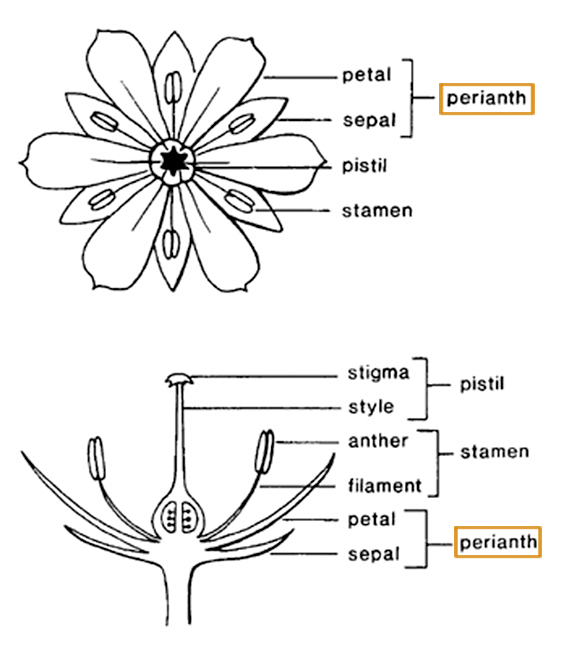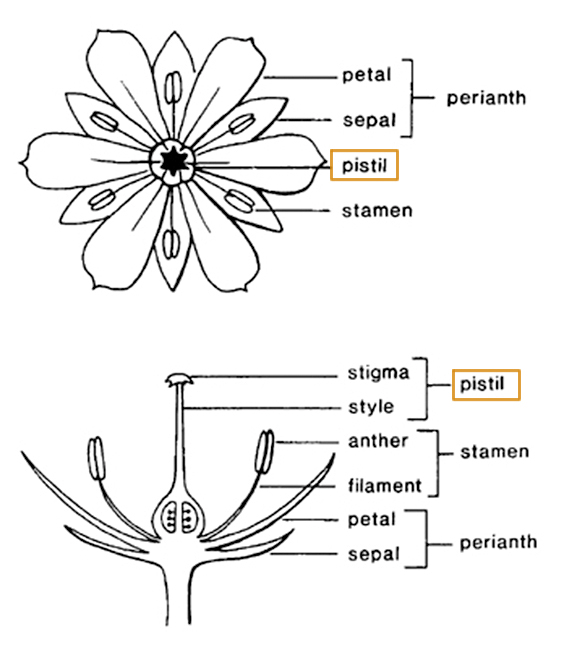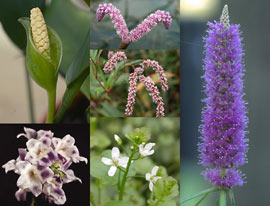Carex L.
sedge
Cyperaceae
Acorus, Cyperus, Juncus, Sparganium, Typha
cosmopolitancosmopolitan:
(adj) essentially worldwide in distribution
, mainly temperatetemperate:
(adj) of the climatic zone between boreal and tropical
Over 2,000 species worldwide, with numerous species cultivated for ponds and wetland restoration projects, including:
Carex buchananii Berggr.
C. comans Berggr.
C. fracta Mack.
C. muskingumensis Schwein.
C. scoparia Willd.
C. senta Boott
C. simulata Mack.
C. stipata Muhl. ex Willd.
C. stricta Lam.
C. vulpinoidea Michx.
information not available
not weedy
clumping or rhizomatousrhizomatous:
(adj) possessing rhizomes
, grass-like sedge
Perennialperennial:
(adj) (of a plant) having a life cycle of more than two years
, monoeciousmonoecious:
(adj) having separate male and female flowers on the same individual
or sometimes dioeciousdioecious:
(adj) having separate male and female flowers on different individuals of the same species
. Leaves in a rosetterosette:
(n) a radiating cluster of leaves, usually close to the ground at the base of a plant
 , narrow, elongate, flat or keeledkeeled:
, narrow, elongate, flat or keeledkeeled:
(adj) having a keel; sharply creased
or involuteinvolute:
(adj) rolled inwards (usually of leaves)
. Flowers unisexualunisexual:
(adj) (of a flower) with either stamens (male) or pistils (female) but not both; consisting of only male or female flowers
, in few- to many-flowered spikelets; spikelets unisexualunisexual:
(adj) (of a flower) with either stamens (male) or pistils (female) but not both; consisting of only male or female flowers
and either male or female, or bisexualbisexual:
(adj) having both male and female sexual reproductive structures on one individual or in one flower
; spikelets arranged in spikes, heads, racemes, or panicles. Perianthperianth:
(n) collective term for the calyx and corolla of a flower; also used for floral whorl(s) in which the calyx and corolla cannot be resolved; any of the leaves or bracts surrounding the sex organs of bryophytes
 absent; pistilpistil:
absent; pistilpistil:
(n) the stigma, style, and ovary collectively; the female reproductive organs
 enclosed in flask-shaped bractlet (perigynium). Fruit contained by and falling with perigynium.
enclosed in flask-shaped bractlet (perigynium). Fruit contained by and falling with perigynium.
shallow water or wet ground of lowlands and especially mountains; often growing at edges of lakes or streams, or in bogs or marshes
A species-rich genus distributed mostly in temperatetemperate:
(adj) of the climatic zone between boreal and tropical
regions. Species identification is mostly based on the shape of the inflorescenceinflorescence:
(n) the arrangement of flowers on the floral axis
 and of individual flowers.
and of individual flowers.